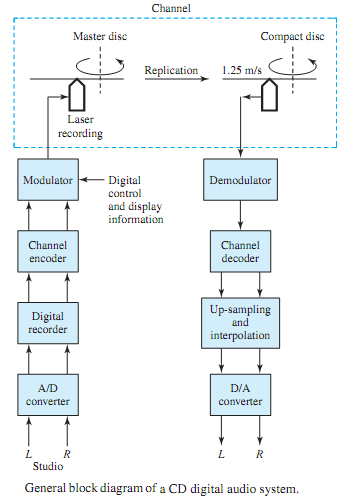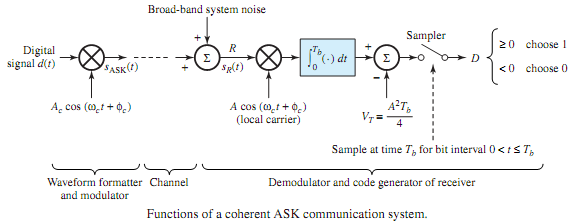Q. Explain Amplitude-shift keying?
A carrier's amplitude is keyed between two levels (binary 1 and 0) in binary ASK. Figure shows the functions of a coherent ASK communication system. Let us consider a bit interval from

t = 0 to t = Tb, since the operation of any other interval will be similar. The desired ASK signal is given by

where Ac, ωc, and φc are the peak amplitude, angular frequency, and phase angle of the modulated carrier, respectively. Equation can be viewed as a carrier Ac cos(ωct + φc) modulated by a digital signal d(t) that is 0 or 1 in a given bit interval. The digital signal and product device shown in Figure are then equivalent to the waveform formatter and modulator. Assuming that the received signal sR(t) differs only in amplitude from sASK(t), one can write

The product device in the receiver's demodulator acts like a synchronous detector that removes the input carrier. The major disadvantage of the coherent ASK is that the required local carrier must be phase-connected with the input signal. The input to the integrator is a unipolar PCM signal, and the remainder of Figure is a PCM receiver.
The noncoherent ASK system eliminates the need for a coherent local oscillator. Figure shows the demodulator and code generator for a noncoherent ASK system. A matched filter (that has its impulse response matched to have the same form as the carrier pulse at its input) and envelope detector take the place of the synchronous detector and integrator of Figure. While ASK systems are not as widely used as other systems for various reasons, the ASK concept remains significant, particularly as applied to modern optical communication systems which use intensity modulation of a light source.
